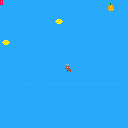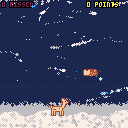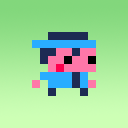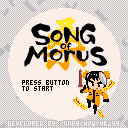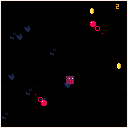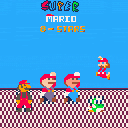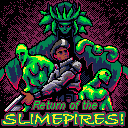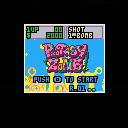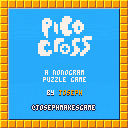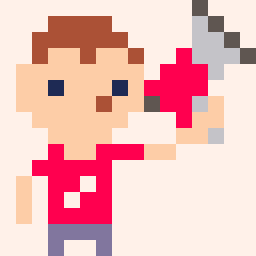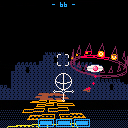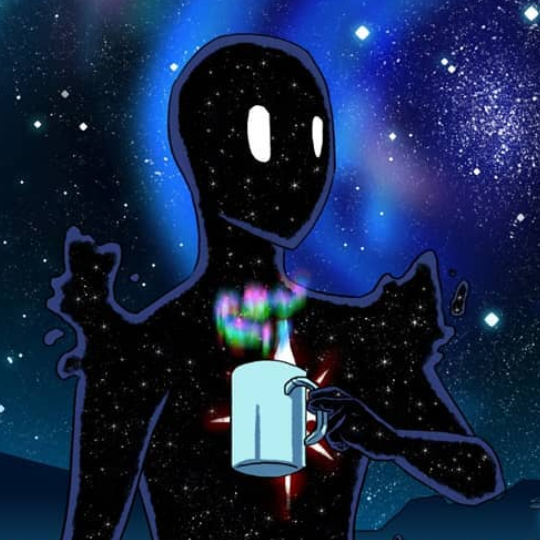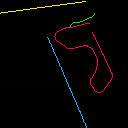A simple little fighting game featuring animals with very different abilities. Supports up to 4 players.
(Sadly does not yet support single player)
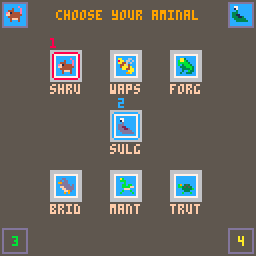
The controls:
- move: p1: arrow keys, p2: wasd
- o (special move): p1: z, p2: w
- x (attack): p1: x, 2: q
The players:
- shru: a speedy little guy
- o: dash and turn (can quickly get behind your foe to strike)
- x: bite
- waps: can buzz through the air
- o: not a thing
- x: sting (will poison your enemy -- if they can get you back, they'll be cured, otherwise they're toast)
- forg: a jumpy little dude with some reach
alright, this was made for the uhhhh I'm Hungry! game jam
I'm bored please follow me on Twitter or something
https://itch.io/jam/im-hungry
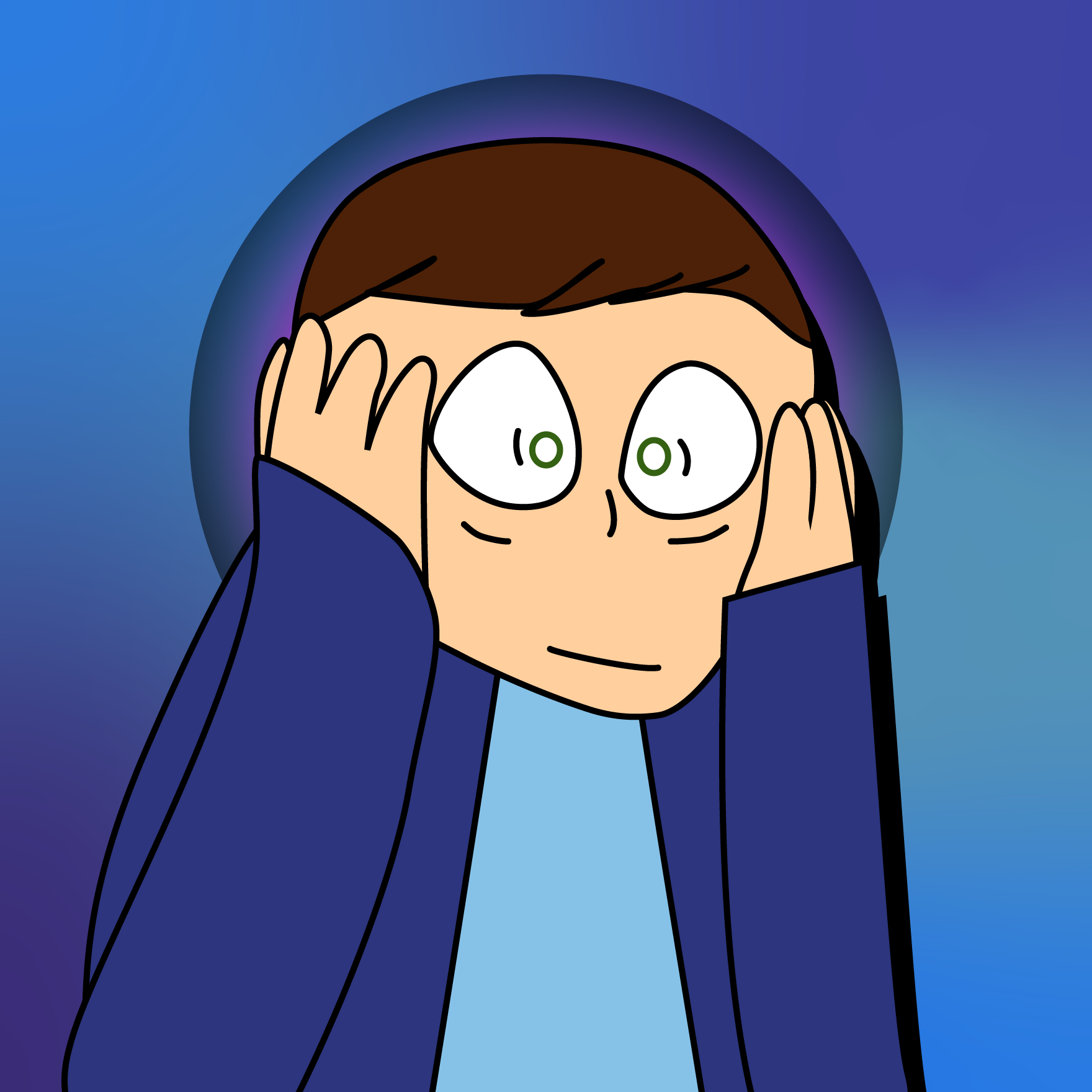
> Vous contrôlez un petit rennes qui doit attraper le plus de nourriture possible, il s'agit de pain et de mûres. Plus vous attrapez de, plus la nourriture va vite et plus il est compliqué de l'attraper. En haut à droite, vous verrez qu'il y a votre tableau de bord, chaque aliment pêché vaut un point. Et en haut à gauche, il y a un panneau qui vous montre combien d'aliments vous n'avez pas attrapés. Attention ! au bout d'une dizaine d'aliments non attrapés vous perdez et le jeu affiche alors « GAME OVER ! », alors il faut appuyer sur enter pour recommencer.
> Les commandes sont : la flèche droite pour se déplacer vers la droite, la flèche gauche pour se déplacer vers la gauche et la flèche vers le haut pour sauter. C'est si simple !

Hello.

With the understanding that Pico-8 graphics will always use memory location 0x6000-0x7FFF (hexadecimal memory location), then what new resolutions could be added by ZEP without using any additional memory ?
Well, quite a few actually.

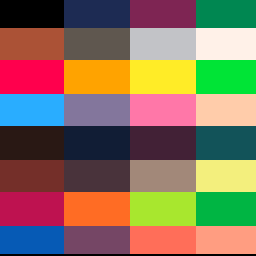
(128 x 128 / 2) = 8192
Let's look at the primary resolution which is 128x128 pixels with a maximum of 16-color choices. Now be aware a new palette was found for it so you can change any of these 16-colors to really 32-colors, but you cannot change the TINT, either R G or B of any of them. They are a fixed color set from the 32 shown above. And despite this palette you can only view 16 of them at a time - conventionally.
With "hardware" tweaks you can have more on the screen at a time.
But this article is not going to cover that. Instead it is going to cover what CAN be done with those 0x2000 or 8192-bytes of memory for graphics and where any pixel can be any other colored pixel. This primary resolution uses 2-horizontal pixels to make up one byte.




Hello,
I was trying to edit code of an existing cartridge, trying to follow the flow step by step and doing some experiments.
Unfortunately, pico8 code editor is ugly and (in my opinion) lacks of some useful functions.
I don't know if this is possible but anyone knows how can I edit the code of an existing cartridge with an external editor?
Thank you
Fred




Taoist Priestess Song encountered a Jiangshi (Chinese hopping vampire) and fight under the light from her campfire.
The boss changes her attack pattern for every 4000 score, and it goes forever until your character loses
CONTROL
Z: attack (hold)
X: jump
Arrow: move
CONTEXT
This game is a small self-learning experiment, for me to learn pico8 and also catch up with BulletHell Jam. This game is a part of my Song of Morus project, and kinda a demake of one of my game.
This is an anonymous function shorthand suggestion & discussion for pico8.
sum=function(a,b)return a+b end |
Right now, anonymous function definitions look like this.
This is way too long for such a simple function!
I know that Lua doesn't have its own short function; although efforts were made(as seen here), none stood out to be practical.
But as there is already a ton of shorts in pico8, why not add one more?
Of course, then we have to decide the syntaxes for this short.
Below I list three function shorts from other languages:
Verbose Lambda
As implemented in Python and Java.
lambda p1=default,p2:expression sum=lambda a,b:a+b |
(example from Python)
Allows default values, which makes the assignment of local values very concise.
From my experience of size-optimization in pico8, one pattern troubles me: nobody uses local variables.
Of course, size-optimized code is supposed to be purely procedural and I get that; still, they can be better with such a shorthand.

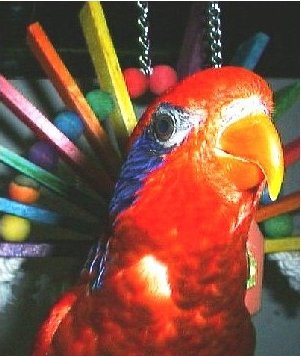







Hey, is there a way to draw a rectangle of arbitrary dimension filled with tiled sprites, aka textured rectangle or tiled rectangle? I can of course manually iterate and draw the same sprites many times, but this had very bad performance so I quickly hit over 1 CPU (meaning I'm dropping from 60 to 30 FPS).
In other engines, you'd set sprite rendering mode to Tiled and stretch the sprite, resulting in a repeating pattern preserving the sprite original size, instead of stretching the original sprite like sspr.
Recently, we got textured lines (tline) and fill patterns (fillp) but there is no direct way to use them to draw tiled sprites.
I see some ways to do that, but they are all workarounds, with no one-line solution:
a. iterate on 2D coordinates and draw same sprite with spr() -> bad performance
b. prepare a tilemap of the same sprites and draw them, offset by some camera() with map() -> need to either setup tilemap in data or generate them at runtime, and need to think with reverse offset to set camera properly. Kind of a waste of data if your rectangle is always using the same sprite. Only works if you have spare space in your tilemap (or you must overwrite some tilemap data and restore it later; note that with Big Maps in PICO-8 0.2.4, it's less of an issue)
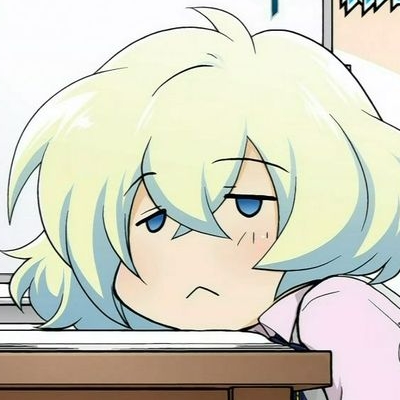
SPEEDCAT v1.1 Patch Notes:
- added 130ms coyote time
- added a new block: platforms
- reworked room layouts for better flow and feel
SPEEDCAT
A game all about collecting coins and being faster than your friends!
How to Play
Can you be the speediest cat? There are 32 different "rooms" that you can explore. Within each room, there is exactly one (1) SPEEDCOIN that you can collect! Collecting the 32nd coin will immediately end the game and display your completion time and the number of deaths you had!
The coins can be collected in any order, so use your creativity to think of creative routes to get those coins even faster the next time! Or, you could attempt a no-deaths run! Share your high scores in the comments below to compete with the SPEEDCAT community!


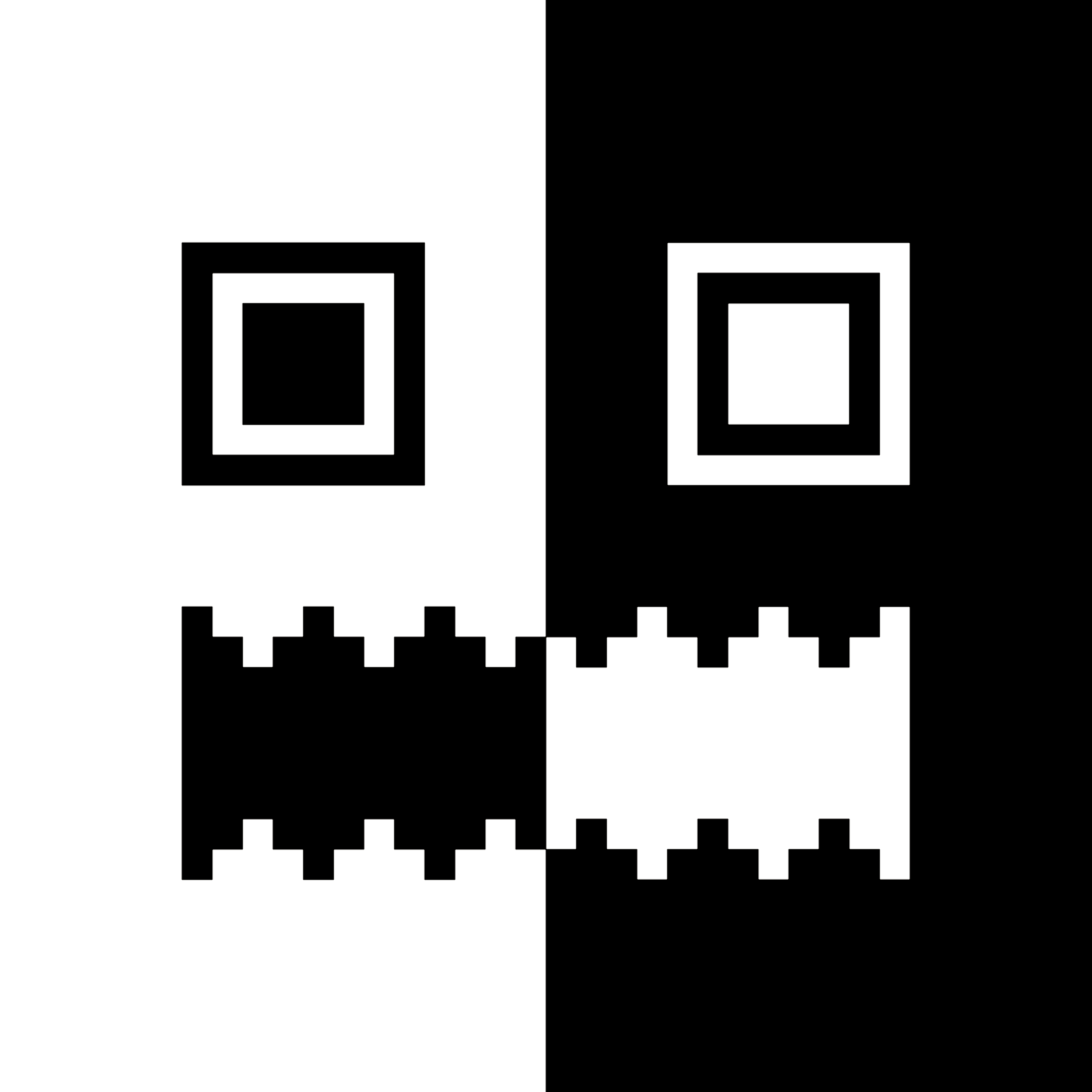

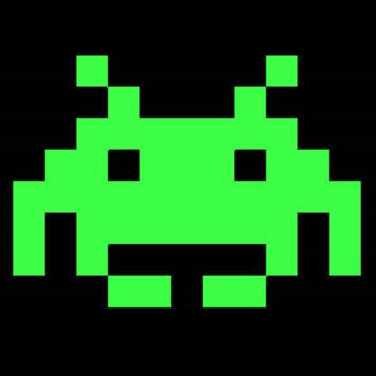


I have a foe taking damage from multiple bullet types on the same frame. I'm able to inflict 'impact' movement to the foe via the bullets update function (i.e. the foe jiggles when struck and still alive). The problem though is the death movement. I want to send the foe flying a certain amount depending on what kills them. Instead of doing calculations inside the bullet update like I had for the jiggles... I had been sending an id of the last struck bullet type to the foe's update, where it could then do the operations. This works fine for single shot deaths. However this doesn't look great when they get hit by like 10 things at once on a frame and they do the kinetic animation for the wimpiest bullet they r hit with. So I need a system of identifying basically the bullets (the type and number of each type) from the last 10 frames that have hit...and define that into some kind of kinetic energy multiplier to determine how far the body flies.
Question is how do I go about this, and is there a better method?
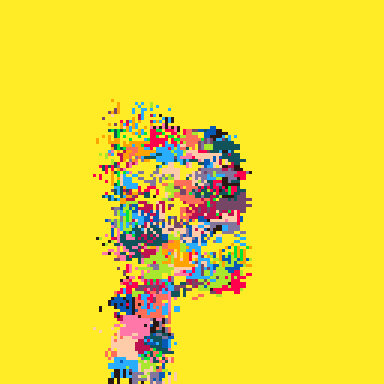
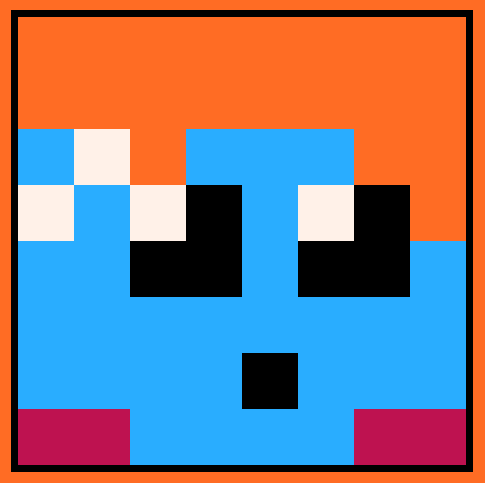

Hello! This is my first game, so sorry if it is bad (*edit: it is). Thanks to @Gabe8bit for the original game, and Nintendo for Mario.
WHY I NAMED IT SUPER MARIO 8 STARS:
I named it "Super Mario 8 Stars" because the original creator @Gabe8bit made a SMAS remake on PICO-8, So I mixed up Super Mario All Stars and PICO-8 And got Super Mario Eight Stars!
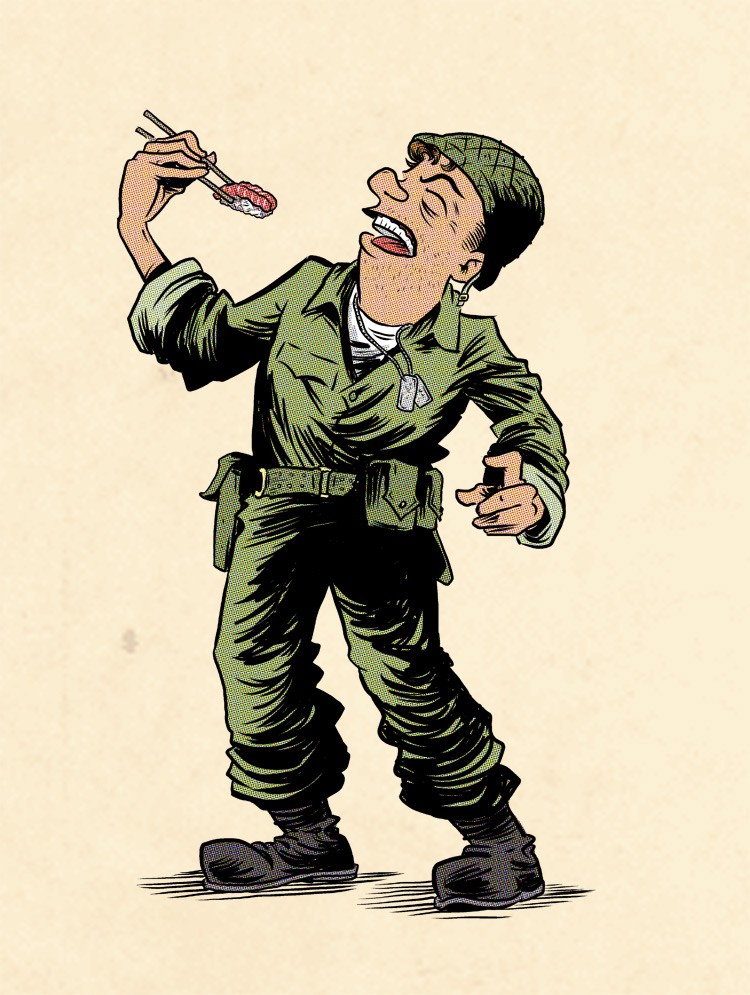



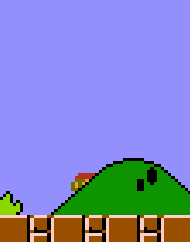
About
My first go at Pico-8! I wanted to try to do something a bit different with cards that people don't normally do, with big chunky cards.
Aim of the Game
Win big - starting with $100, can you break the bank at $1250 or more?
How to play pontoon
Pontoon is a lot like blackjack, if you've played that, you'll be familiar with the general idea. If not... please allow me to explain.
Each hand you play, you're trying to beat the dealer's hand. You'll both be dealt a card and you're invited to bet on that first card, from $5 to $25. Then you're dealt a second card.
If you happen to have 21 in those two cards, that's called a pontoon and you'll win (unless the dealer also has a pontoon!), otherwise you'll be looking at your hand and deciding how to proceed.

Return of the SLIMEPIRES! Music Mod
This is a sound mod that adds music and changes a couple of the SFX (namely the gun sound)
What the mod changes:
- Adds a polished music track
- Adds music toggle in main menu
- Changes gun sound to be more like a sci-fi blaster
- Changes explosive barrel sound to sound a bit echoey to convey liquid inside the barrel
- Changes transformation ticking sound with a "dampen" that tones it down a touch
That's it!
This music has been in my head for several days now and I watched several hours of gruber music videos to grasp some good composition theory. I made the track pretty long so as not to get too familiar too quickly because the game is lengthy for a PICO-8 game. I tried to eliminate all clipping but it's very tricky for this type of game where there's so many SFX calls constantly. I still think it sounds very enjoyable. Hopefully you enjoy it too!



About this game
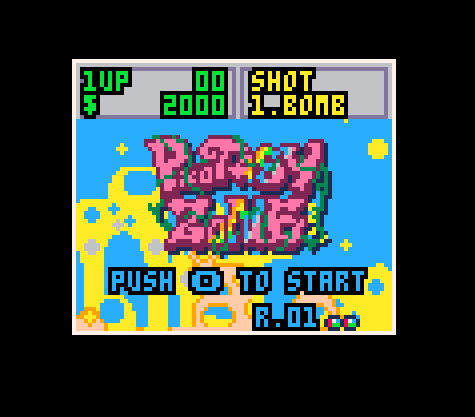
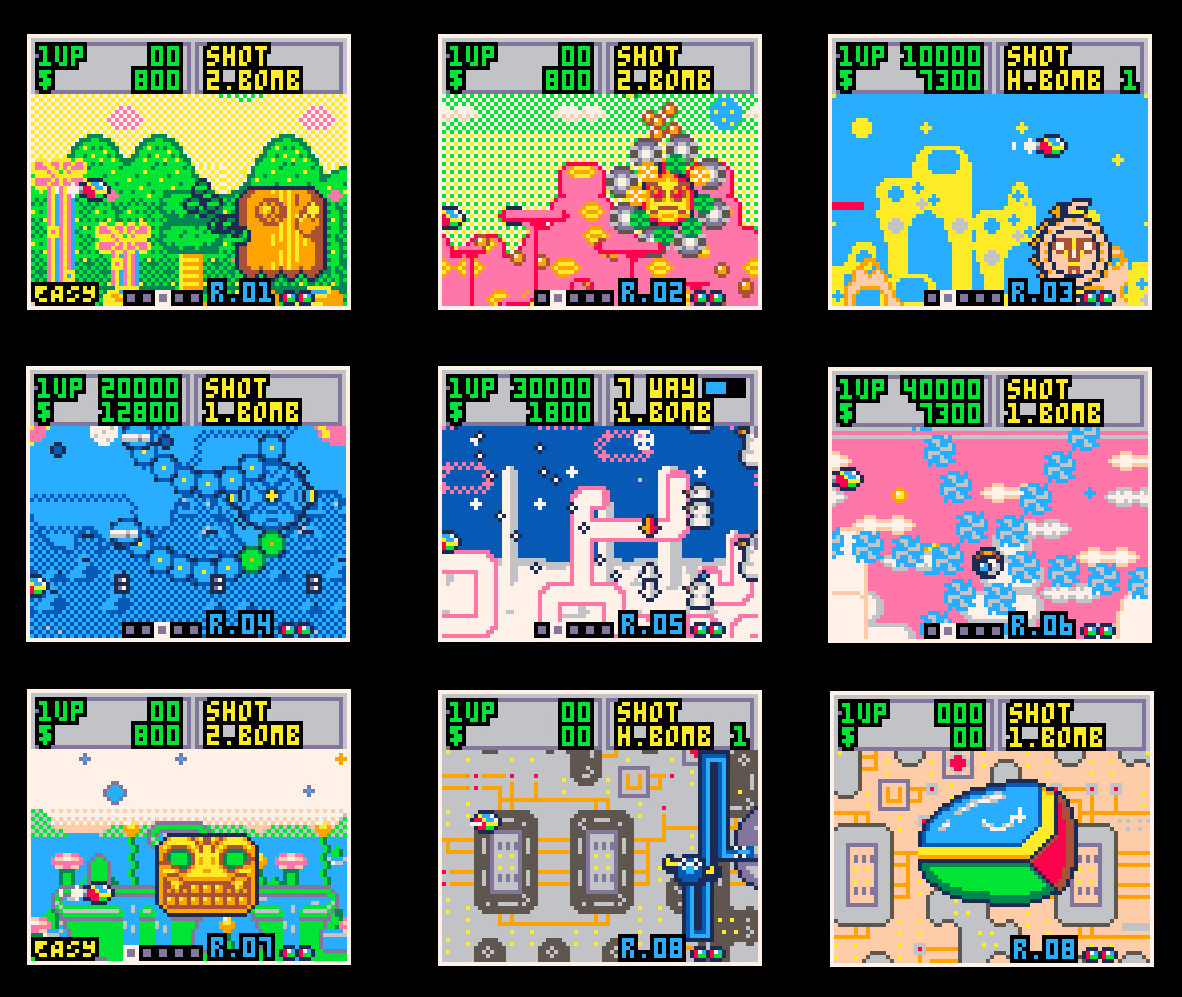
This is a demake of Fantasy Zone, SEGA. Boss rush mode is available and you can fight all of 8 bosses.
I made this game to feel "Wow, looks like the legendary game Fantasy Zone when seen from a distance!".
I never made this as a perfect clone. There are many differences from the original game.
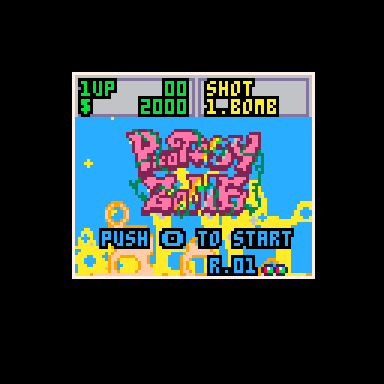
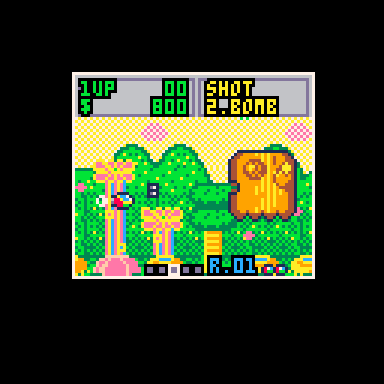
How to play
Start the game and enter select panel.
- Select mode: EASY or NORMAL
- Select stage: 1 to 8
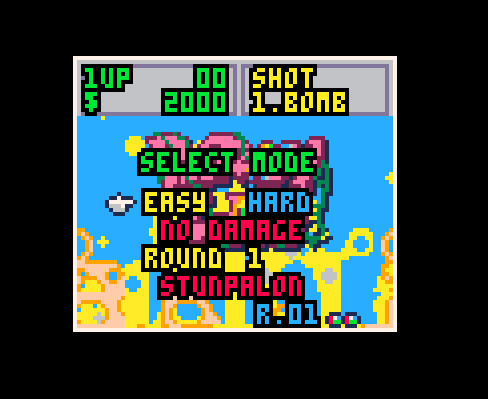
If you select EASY, player doesn't get damaged. In this mode, you can enjoy tour of all bosses of Fantasy Zone and "EASY" is displayed at the bottom of the screen. If you select HARD, collision detection of the player is enabled.

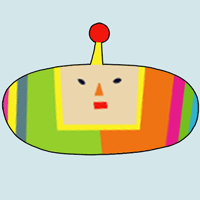
Controls
Arrow keys - Move selector up / down / left / right.
x - Select
z - Back / Return to level select
How to play
A nonogram is a cell based picture puzzle, where you must find all of the shaded cells. If you find all of the shaded cells then you will reveal the hidden picture!
The numbers above and to the left of the grid describe the number of consecutive shaded cells in the row or column. For example, if we imagine a 10x10 grid and we have a ( 10 ) above the first column, then we know that all ten cells are shaded for that column. If in the first row we have the clue ( 5 4 ) this tells us that there are five shaded cells, a gap of at least one non shaded cell, and then four shaded cells.



I had been trying to install pico8 on my retropie for months but still no success.
https://retropie.org.uk/forum/topic/24127/how-to-install-the-pico-8-on-retropie-for-dum-dums
the part driving me crazy is "6. INSTALL WIRINGPI".
I seriously can't get how to install this thing properly. One of my attempts resulted in crashing my retropie and I had to reboot and reinstall retropie, removing all the retroarch configurations I made. I don't want to repeat that ever again...
the guide says to enter Pi $ prompt, but since i'm not a raspberry pi expert I don't know what that thing is, and I couldn't find further guides too.








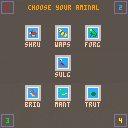
 0 comments
0 comments

